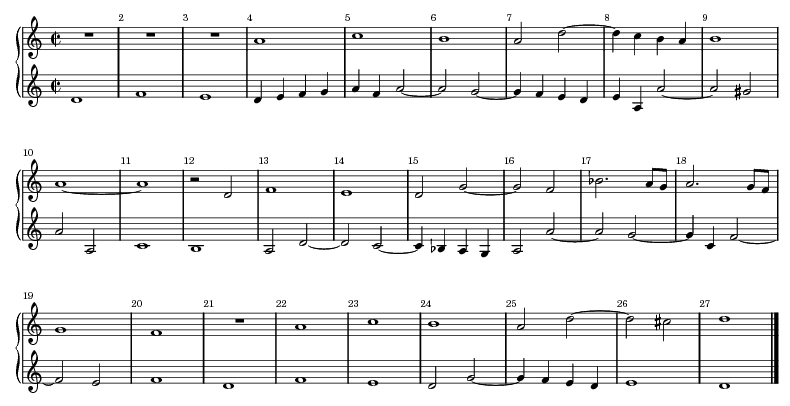Following on from Fifth Species in two parts, Fux continues by going through all five species in three parts, and then four,
against a cantus firmus. You will find those sections in Mann's translation
(The Study of Counterpoint).
The next section of Gradus is in Mann's The Study of Fugue. At this point Fux's original text includes a "brief explanation of the use of suspensions in free writing"; for some reason Mann does not include this in his translation. Therefore I'll look at some examples and offer my interpretation of what may be going on.

The above extracts show "percussed" dissonances which we can identify as accented passing notes. In the first two
the discord is a second above the lower note falling to a unison (f to e, and a to g), and in the third extract the discord
is a compound second falling to an octave. In all three cases the upper note steps up again to form a discord which is
resolved when the suspended lower note falls in the usual manner.

In these three extracts the dissonant passing note in the lower voice is a 7th falling to an 8ve. Again the note steps back up to form
a discord which is resolved when the other (suspended) voice falls by step. In the second and third extracts we also see the accented
passing note in the upper voice as used in the first examples.

These two extracts show a 4th used as an accented passing note. In contrast to the previous examples, these
two show the melodic movement continuing down rather than stepping back up.
Note that in all but one of the 8 extracts above the suspension has been approached by leap from below.
 Infrequently, Fux uses the accented passing notes without a suspension. The second example in this group
is the only one we've seen in which the accented passing note is in an ascending line.
Infrequently, Fux uses the accented passing notes without a suspension. The second example in this group
is the only one we've seen in which the accented passing note is in an ascending line.
Finally, here is the first two part fugue from Gradus. The new points to note are:

The next chapters of Gradus which are included in Mann's The Study of Fugue cover fugue in three & four parts, and double (invertible) counterpoint at the octave, tenth, and twelfth. The final fugues show the use of two or three subjects.
Mann's book includes sizeable chunks from texts by Marpurg, Albrechtsberger (who taught Beethoven), and Martini (who taught J.C.Bach and Mozart). These are superb works with wonderful examples; for instance Albrechtsberger's text includes a number of canons and riddle canons by Palestrina, Mozart, and others.
Please contact me with any comments, corrections, or suggestions for additional material about these web pages.
Please link to the main page, this will increase the page ranking on the search engines.
Contact me if you want to be included on my links page, or wish to suggest appropriate links.
You can help to encourage ongoing development of the pages and the applets by purchasing something you need from the affiliate links,
or by a donation.
All the music examples on this page were drawn using Lilypond.

 email
email